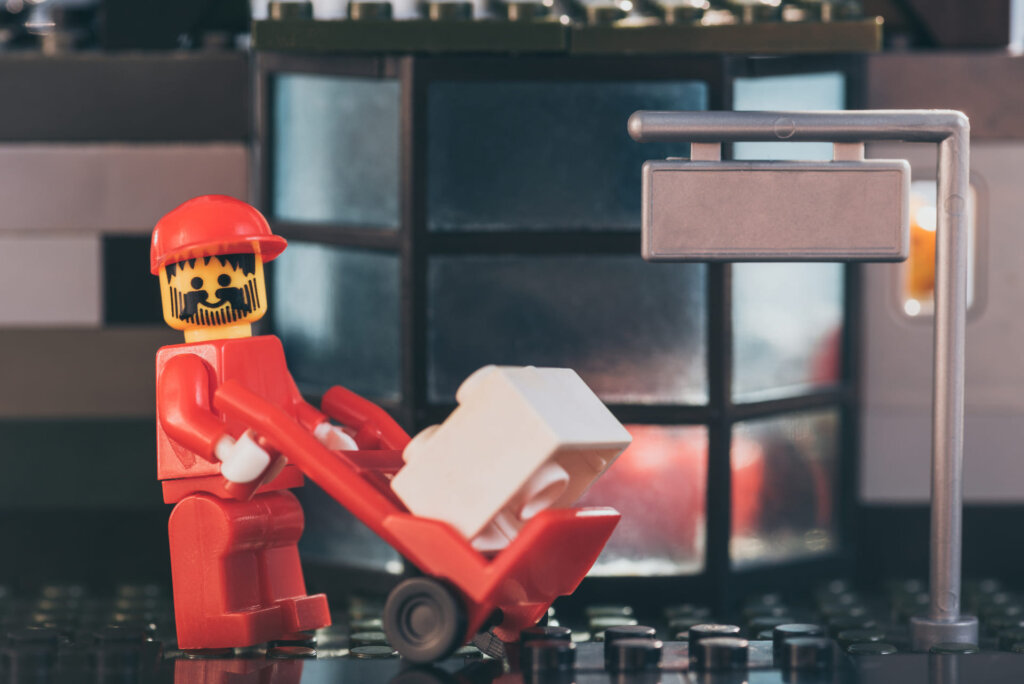 Insight What we can learn from Lego’s abandoned bottles-to-bricks scheme
Insight What we can learn from Lego’s abandoned bottles-to-bricks scheme
Lego has been forced to abandon its plans to use recycled plastic bottles to make its famous building blocks. But their transparency offers useful lessons to other brands about dealing with – and communicating – the realities of complex supply chains from a sustainability perspective.

Lessons learned from Lego’s ‘sustainability setback’
One of these realities is that what sounds like the more sustainable option may not always be the one that reduces emissions.
Lego have been looking into the bioplastics question for a number of years now. I was working on a project with them in 2019 when they had just started looking at alternative materials. Some of their bricks are already sourced from sugar cane, and the company’s packaging is in the middle of a switch from plastics to paper.
In reality, there are many factors that might explain why a seemingly ‘slam-dunk’ sustainable option just doesn’t work out to be more sustainable at all.
The first thing to consider is that CO2 emissions will unlikely be the sole factor that’s taken into consideration when making such decisions. For example, if an alternative material halves emissions but requires 10x more water consumption and/or land usage in producing the same volume as the ‘less sustainable’ option, the decision then becomes a little more complex. Do you chase the emissions reductions, or is the cost of these (in water or land usage, not necessarily financial) too much for the company to bear?
You might also have to consider additional processes that could be required in order to make an alternative material viable. In the case of Lego, the recycled bottles produced plastic that was just too soft. So in order to harden it further, additional processes were required that bumped up the overall emissions to the point that the new material became non-viable from an ESG standpoint.
The spectre of scope-three emissions
Depending on the type of business, supply chain and consumer use emissions will inevitably have a huge impact on your sustainability efforts.
The first challenge to overcome is deciding on a calculation methodology for each:
– Supply chains: Do you use the EEIO methodology, which calculates based on spend, or do you attempt to get the data from your suppliers and calculate based on that?
– Consumer use: This is likely to require a full lifecycle analysis. But if you’re a multinational with hundreds or thousands of product lines, can you afford to do so, or do you need to group and categorise?
The next challenge to overcome is mitigation, abatement or reduction. Each company will need to create strategies and programmes to help their suppliers on their own emission reduction journeys. And if they’re looking at setting a science-based target through SBTi, they’ll need to set out their ambitions on this front.
In terms of consumer use, this is also incredibly complex. There are a few things to consider for abatement, however:
1. Consumer education: Are consumers using your products correctly, or in the most efficient manner? For example, might they be leaving electrical appliances on standby instead of switching them off at the mains?
2. Product efficiency: Are your products as energy-efficient as they could be? Is there the potential to create products that consume less energy and therefore lower emissions?
3. Electricity grids: Outside of your direct control, perhaps, but if you’ve made your product as efficient as possible, and have embarked on a huge consumer education programme, there’s still a good chance that your consumers are hooked up to electricity grids that rely on an element of fossil fuels to power them.
What can other businesses learn from the Lego example?
Lego’s ‘sustainability setback’ highlights the need for businesses to do the research and get it validated and verified before making any decisions. Of course, our gut tells us that recycled plastic should be more sustainable than virgin plastic, but while we can use that instinct as the basis for a hypothesis, we need to test it properly first.
Also, kudos should be given to Lego for being so transparent. They could very easily have chased the positive PR associated with ditching virgin material for recycled alternatives, but they’ve done the right thing. In this era of clickbait headlines, something that reads ‘Lego ditches recycled plastic’, for example, isn’t a great look, but backing up that decision with science and data speaks volumes on their dedication to sustainability.
Struggling with your supply-chain emissions?
We use data to map out complex supply chains
Find out more